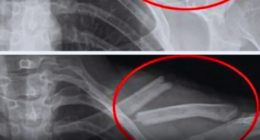Researchers from the Hefei Institutes of Physical Science of the Chinese Academy of Sciences and the University of Science and Technology of China have made a breakthrough in high-pressure magnetic detection using silicon carbide. They generated shallow silicon vacancy (VSi) defects on the surface of a processed silicon carbide anvil cell, making it possible to measure and analyze optically detected magnetic resonance (ODMR) spectra under high pressure. This technique can be used to study superconductivity and magnetic phase transitions of materials under high pressure. The researchers observed the pressure-induced magnetic phase transition of Nd2Fe14B magnets and measured the critical temperature-pressure phase diagram of the YBa2Cu3O6.6 superconductor. The study was supported by the National Natural Science Foundation of China, the Youth Promotion Association of CAS, and the Innovation Foundation of CAS.
A research team from the Hefei Institutes of Physical Science of the Chinese Academy of Sciences (CAS) and the University of Science and Technology of China has made a breakthrough in high-pressure magnetic detection. The team developed a research platform that focuses on studying magnetic phase transitions and superconducting magnetic detection of hydrides under high pressure. High-resolution in-situ magnetic measurement under high pressure has been a challenge, but the researchers have for the first time realized high-pressure in-situ quantum magnetic detection based on the silicon vacancy (VSi) defects in silicon carbide, which has solved the problem of high-pressure magnetic detection.
The researchers generated shallow VSi defects on the surface of a processed silicon carbide anvil cell using ion implantation. VSi defects have only one axial direction, and the zero-field splitting value varied little with pressure (0.31 MHz/GPa). This characteristic is helpful for the measurement and analysis of optically detected magnetic resonance (ODMR) spectra under high pressure.
By using ODMR technology on VSi defects, the researchers observed the pressure-induced magnetic phase transition of Nd2Fe14B magnets at about seven GPa, and measured the critical temperature-pressure phase diagram of the YBa2Cu3O6.6 superconductor. The researchers’ work could aid research on superconductivity and magnetic phase transitions of materials under high pressure.
The use of room-temperature spin-defects in silicon carbide as in-situ high pressure sensors could lead to new studies of quantum materials using Moissanite anvil cells. This technique is significant for the field of high-pressure superconductivity and magnetic materials. The study received support from several organizations, including the National Natural Science Foundation of China, the Youth Promotion Association of CAS, and the Innovation Foundation of CAS. It is important to note that AAAS and EurekAlert! are not responsible for the accuracy of news releases posted to EurekAlert! by contributing institutions or for the use of any information through the EurekAlert system.
Don’t miss interesting posts on Famousbio









